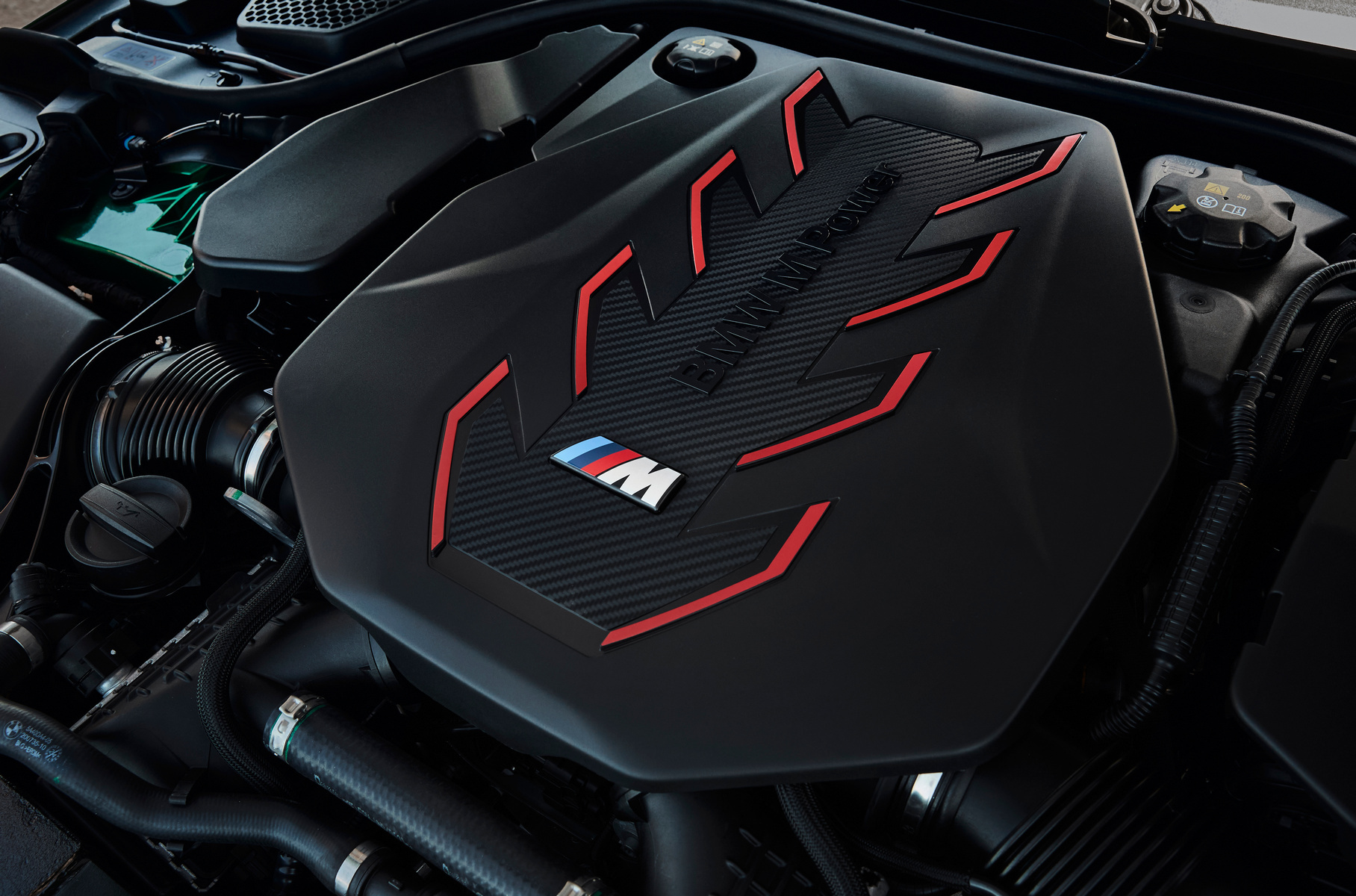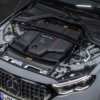A car with the factory index G90 received a hybrid power unit for the first time in the history of the model and crossed the 700 horsepower mark. However, with the addition of an electric motor and a battery under the bottom, the car became as much as half a ton heavier – because of this, the acceleration figures not only did not improve, but even worsened a little! But the car can travel almost 70 kilometers on electricity…
A little more than a year has passed since the premiere of the new BMW fifth series – and the Bavarians presented the flagship modification of the M5 based on it. The super sedan retained the V8 4.4 with two turbines – however, now a new version of the engine with the S68 index is used, which operates as part of a hybrid power plant: almost the same one is used on the BMW XM Label Red Edition crossover. Its output is a record for the M5: peak power is 727 hp, torque is 1000 Nm in the range of 1800–5400 rpm.
New BMW 5-Series: four types of engines and steering at a glance The BMW XM hybrid supercrossover is presented. Three times five. Test of BMW retro fives
At the same time, the gasoline V8 itself even lost a little power: the unit develops 585 hp. versus 600 hp on the previous generation Emka (and 635 hp on the CS version). And the increase was provided by an electric motor with a power of 197 hp, integrated into an eight-speed automatic transmission.
BMW Group
The new M5 is a plug-in hybrid, so it uses a very significant battery capacity: 18.6 kilowatt-hours. Mainly because of it, the super sedan has become more than half a ton heavier: it weighs 2510 kilograms versus 1940 kilograms for the F90 generation car.
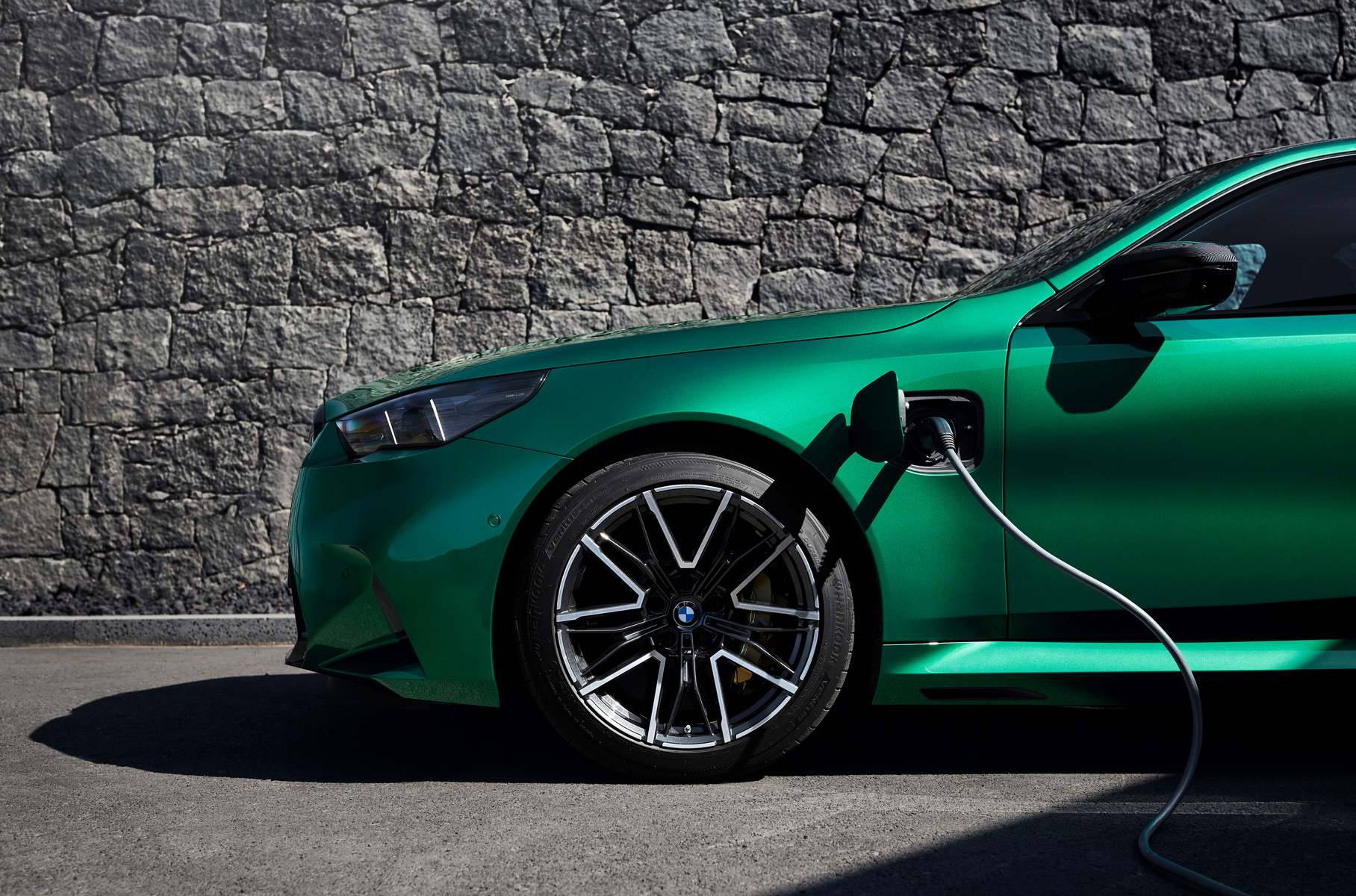 BMW Group
BMW Group
As a result, the acceleration dynamics not only did not improve, but even worsened slightly: acceleration to 100 km/h takes 3.5 seconds (versus 3.4 seconds on the regular M5 of the previous generation and exactly three seconds on the CS version). This is hardly an equivalent exchange, but now the M5 can travel 67–69 kilometers on pure electricity, without turning on the gasoline engine, and even accelerate to 140 kilometers per hour.
However, its dynamics at high speeds have improved: acceleration to 200 kilometers per hour takes 10.9 seconds (versus 11.1 for the previous M5 and 10.3 seconds for the CS version). The maximum speed is the traditional 250 kilometers per hour, determined by an electronic limiter, but when ordering the M Driver’s Package option, it is shifted to 305 kilometers per hour.
 Brakes with carbon-ceramic discs are easy to recognize even from a distance by their golden calipers. This is almost the most expensive option: its cost in Germany is 9900 euros
Brakes with carbon-ceramic discs are easy to recognize even from a distance by their golden calipers. This is almost the most expensive option: its cost in Germany is 9900 euros
BMW Group
Let us remind you that the basis of all “fives” of the new generation is the CLAR platform – just like the cars of the previous generation. Moreover, technically, this version of the platform is closer to the one used on the large 7 Series sedans: it has a double-wishbone suspension at the front and an intricate five-link design at the rear.
But for the M5, the chassis was heavily redesigned. The kinematics of the front suspension have been revised: the steering knuckles are original, the roll center has been lowered, a very large castor and transverse angle of the steering axis have been selected, and the rigidity of all elastic joints has been adjusted. The steering mechanism is attached rigidly to the front suspension subframe, without rubber elements. Rigid supports for fastening the power unit and suspension elements are also used.
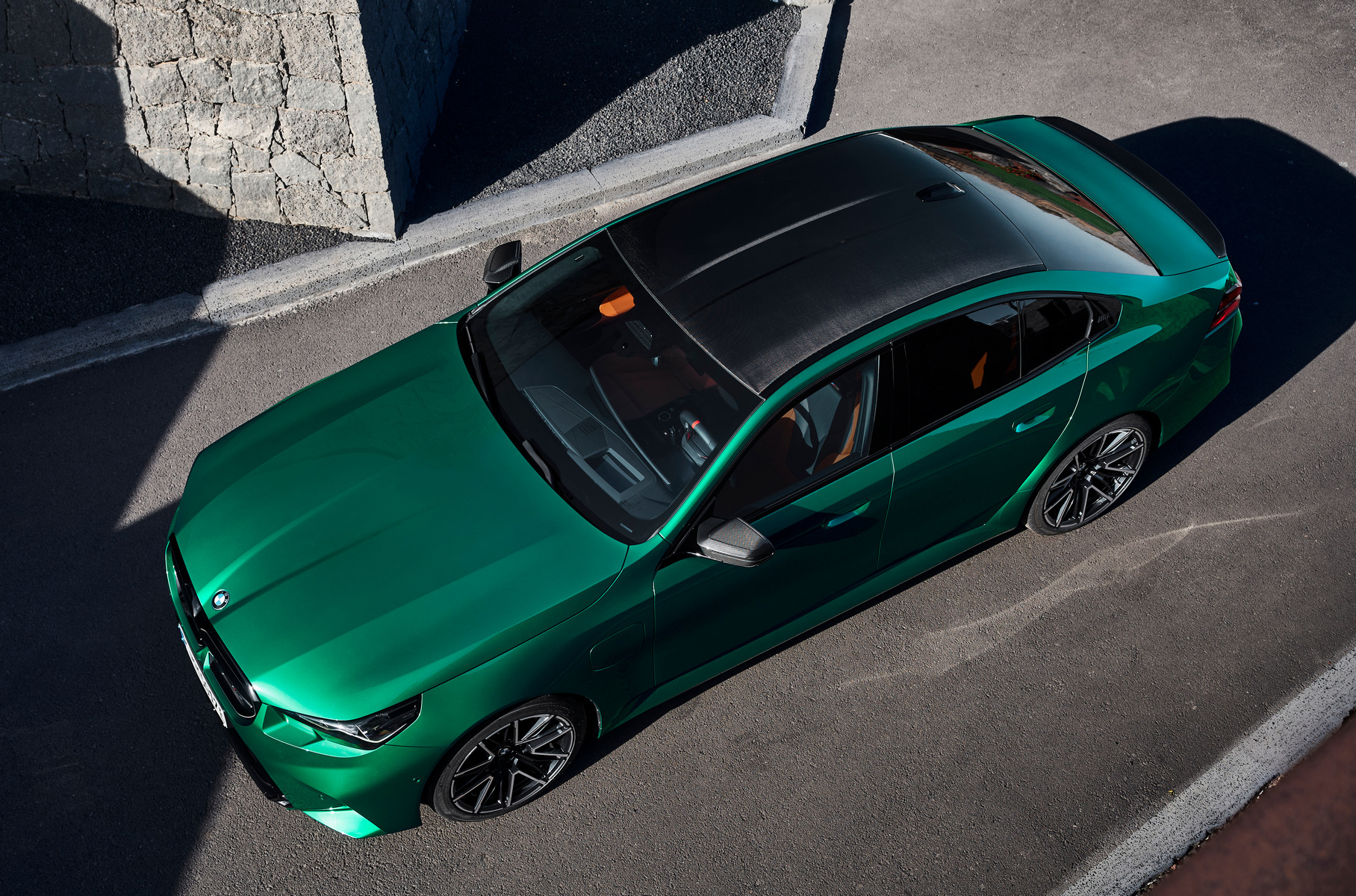 The optional carbon fiber roof for 3,200 euros is unlikely to make the M5 significantly lighter
The optional carbon fiber roof for 3,200 euros is unlikely to make the M5 significantly lighter
BMW Group  BMW Group
BMW Group 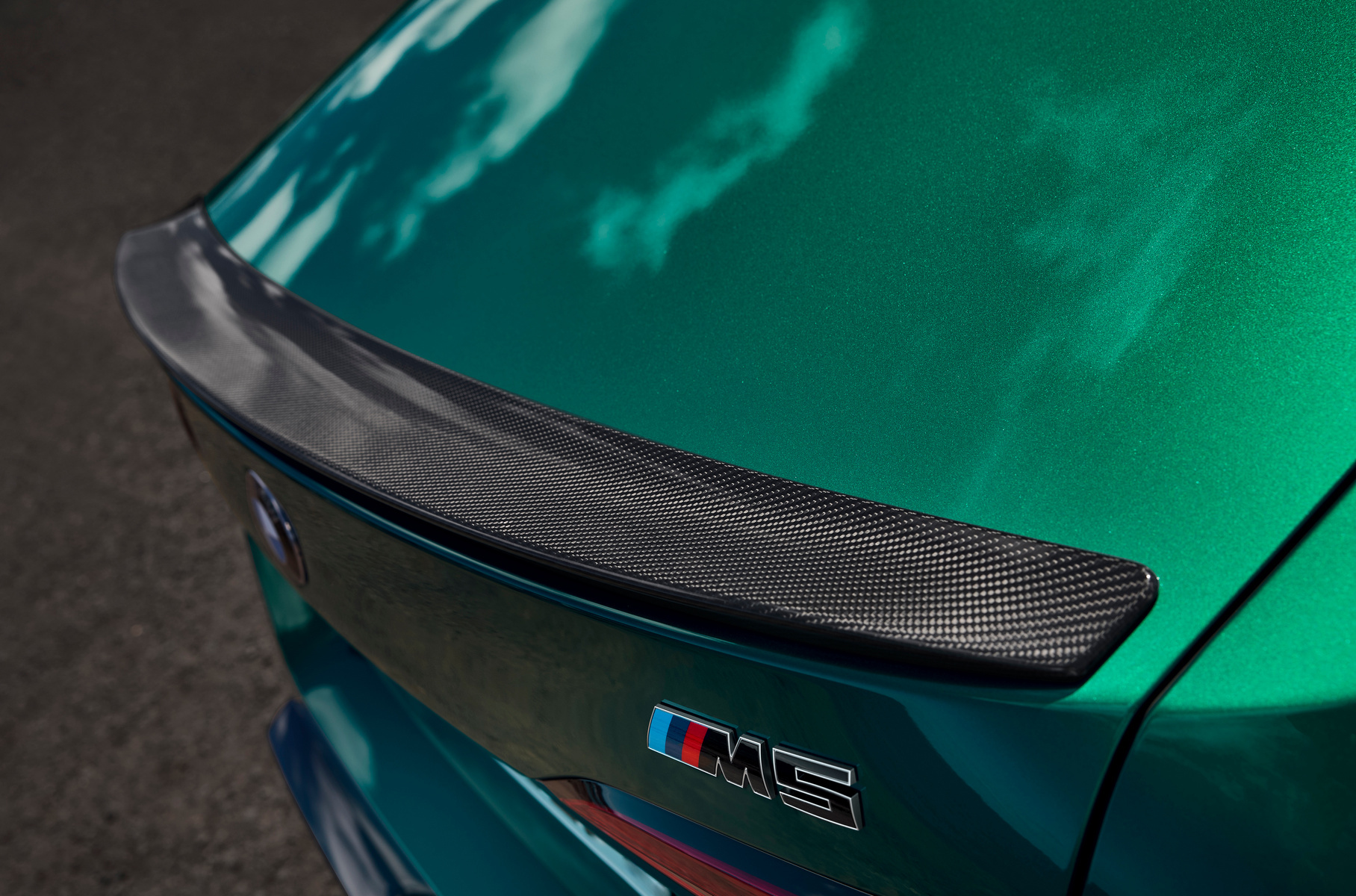 BMW Group
BMW Group
At the rear, original aluminum levers are used, and the knuckles and transverse links are forged from steel using a new technology, which makes it possible to reduce unsprung masses. Even the wheelbase differs from the regular “five” – on the M5 it is 11 millimeters longer. It is interesting that they did not use active stabilizers, although they are installed on the top version of the electric “five”, the BMW i5 M60.
An important innovation: for the first time, the M5 model has introduced a rear wheel steering mechanism, previously used on the XM crossover. It can deflect them by an angle of up to 1.5°. According to BMW engineers, this was done primarily for the sake of maneuverability – despite the very large dimensions of the car, the turning radius was kept the same (12.6 m). And at speeds above 56 kilometers per hour, the rear axle steers in the same direction as the front wheels – which increases the stability of the car during high-speed lane changes.
The M5 is standardly equipped with adaptive shock absorbers with solenoid valves that are independently adjustable on all wheels. There are three operating modes: basic comfortable, sports (its calibrations were selected on the Nordschleife of Nürburgering) and extreme Sport Plus, suitable only for a very smooth track. Along with the suspension settings, the operating mode of the power steering also changes.
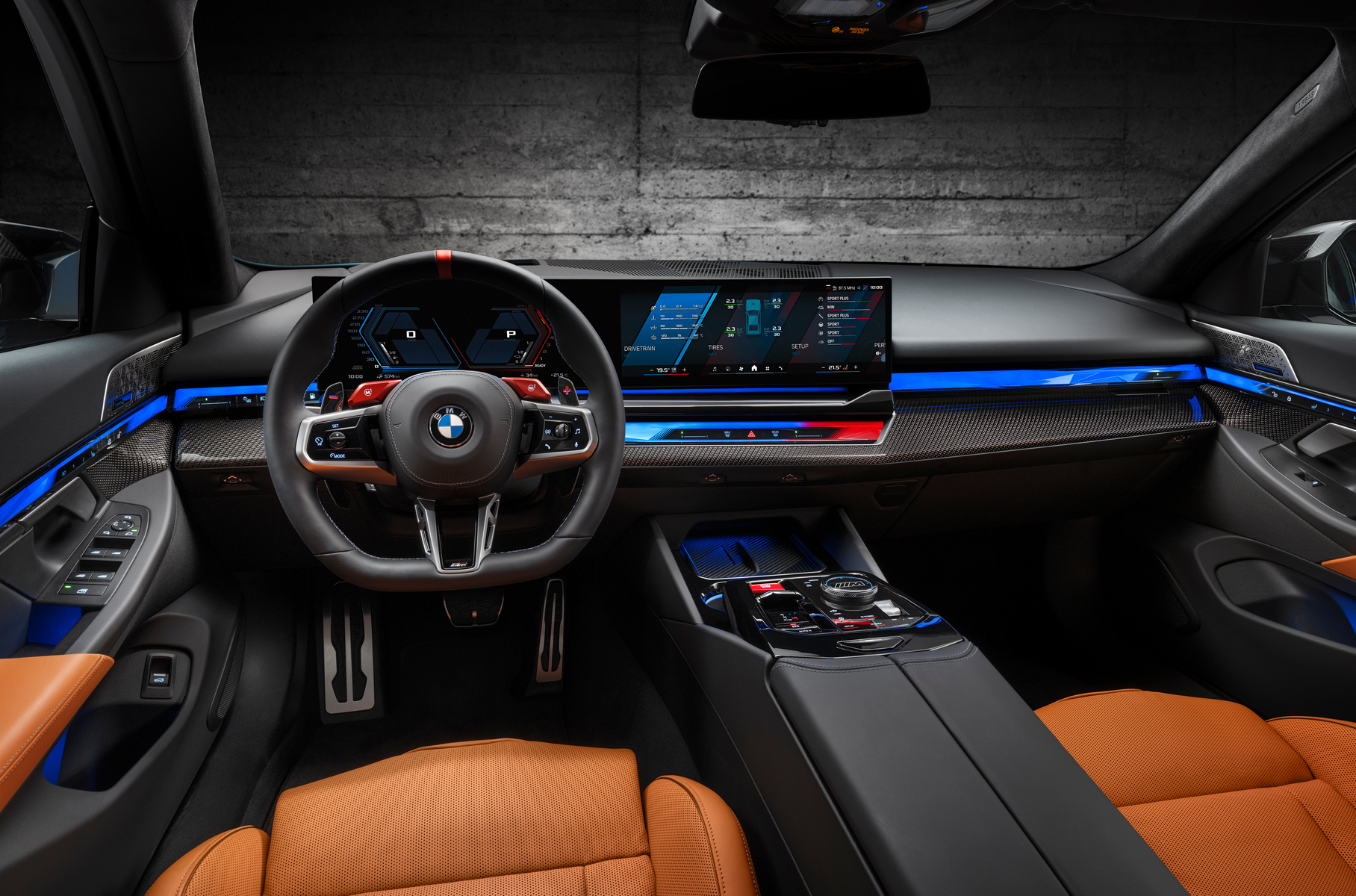 BMW Group
BMW Group 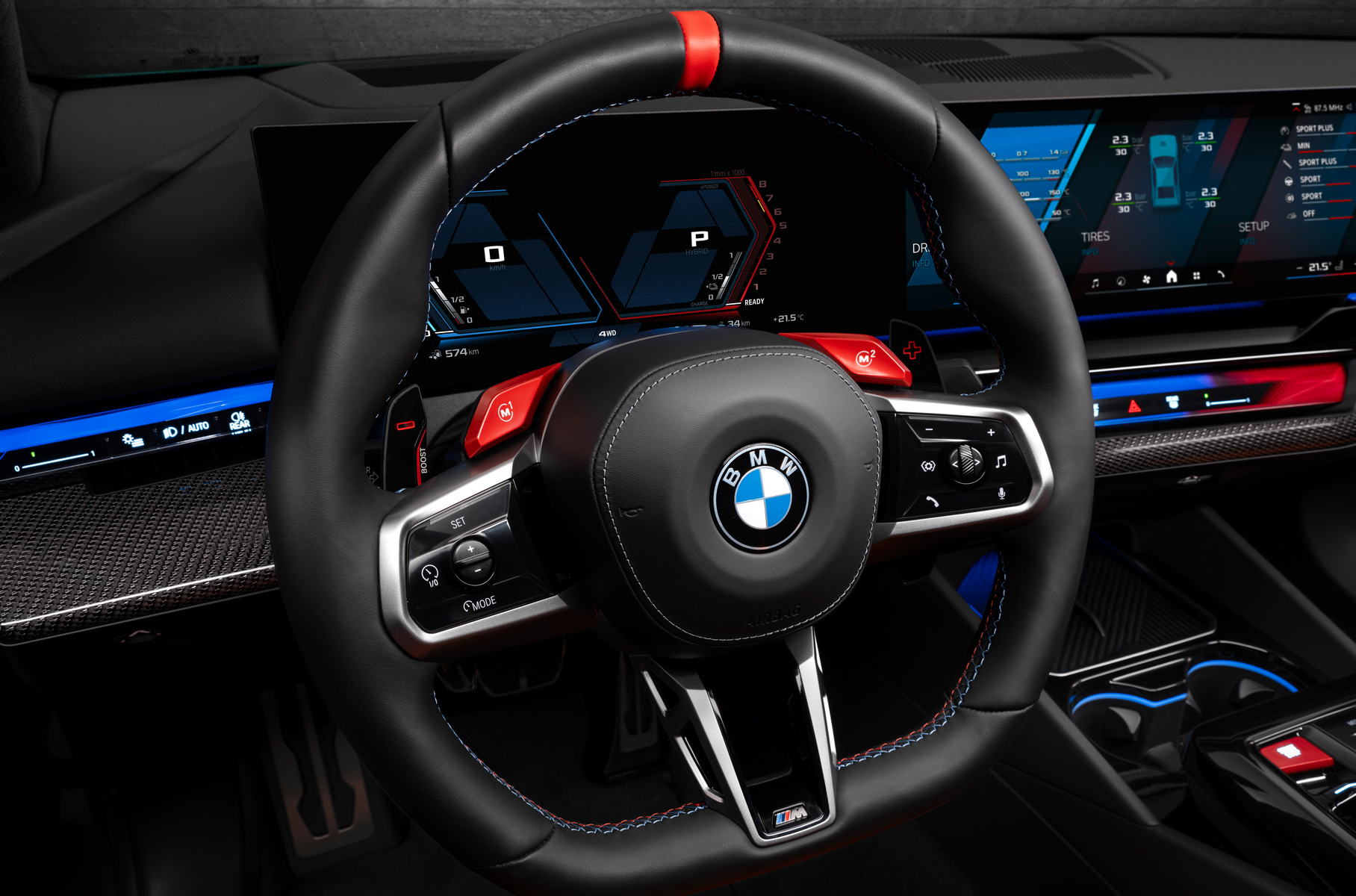 BMW Group
BMW Group  BMW Group
BMW Group 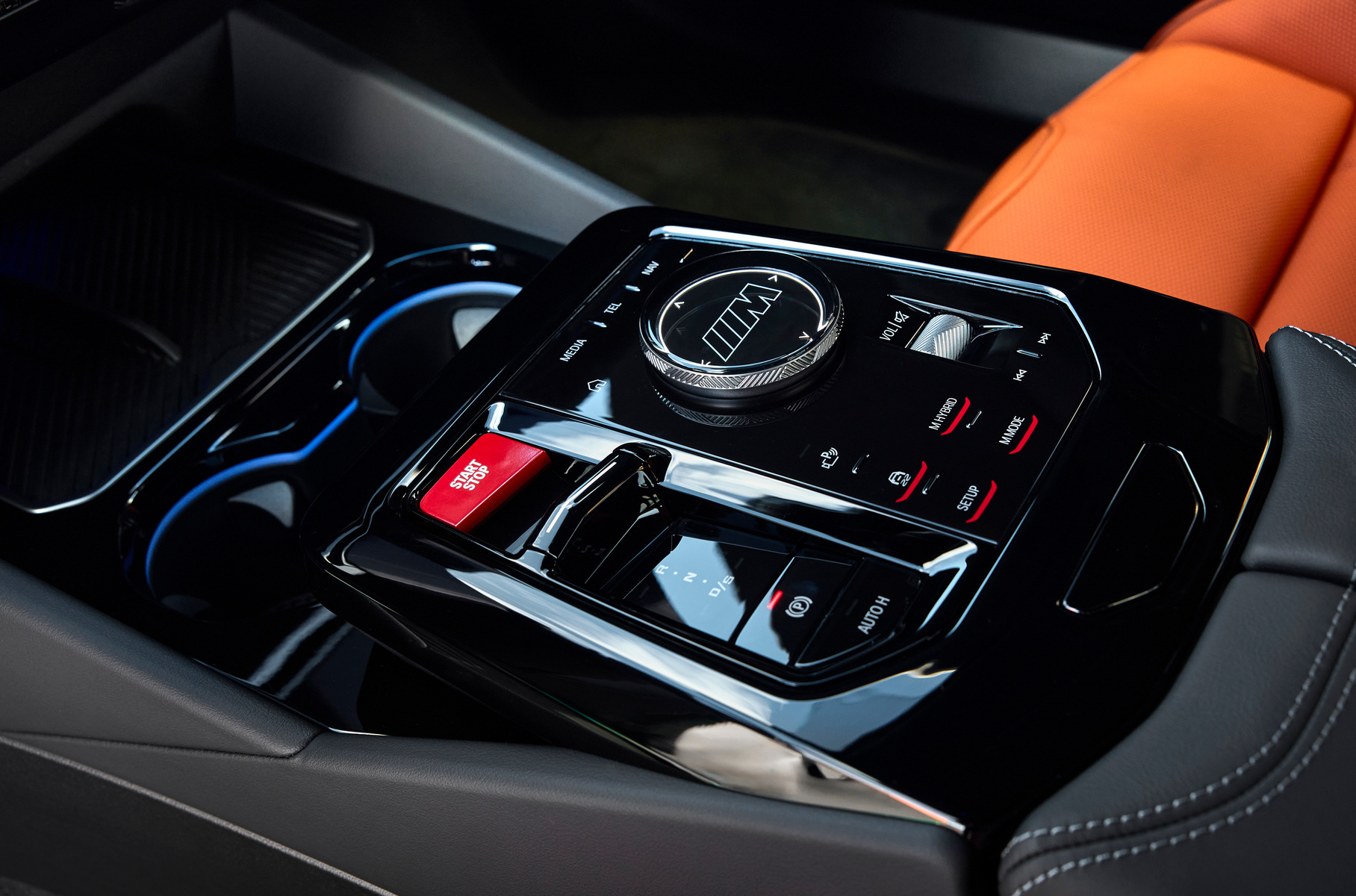 BMW Group
BMW Group
The M xDrive all-wheel drive transmission with a front axle clutch and an active rear M differential is inherited from the previous generation Emka. In addition to the regular all-wheel drive mode, the 4WD Sport program is available, in which more torque is transmitted to the rear wheels, as well as a purely rear-wheel drive 2WD drift mode, in which the stabilization system is completely disabled.
The brakes on the M5 are six-piston on the front axle, with 410 mm discs of a composite design (cast iron rotor, aluminum hub) and single-piston with 398 mm discs at the rear. But as an option, brakes with carbon-ceramic discs (420 mm at the front) and gold calipers are available – they not only resist overheating better, but are also 25 kilograms lighter. The wheels are of different sizes: with a diameter of 20 inches at the front and 21 at the rear, shod with 285/40 ZR20 and 295/35 ZR21 tires.
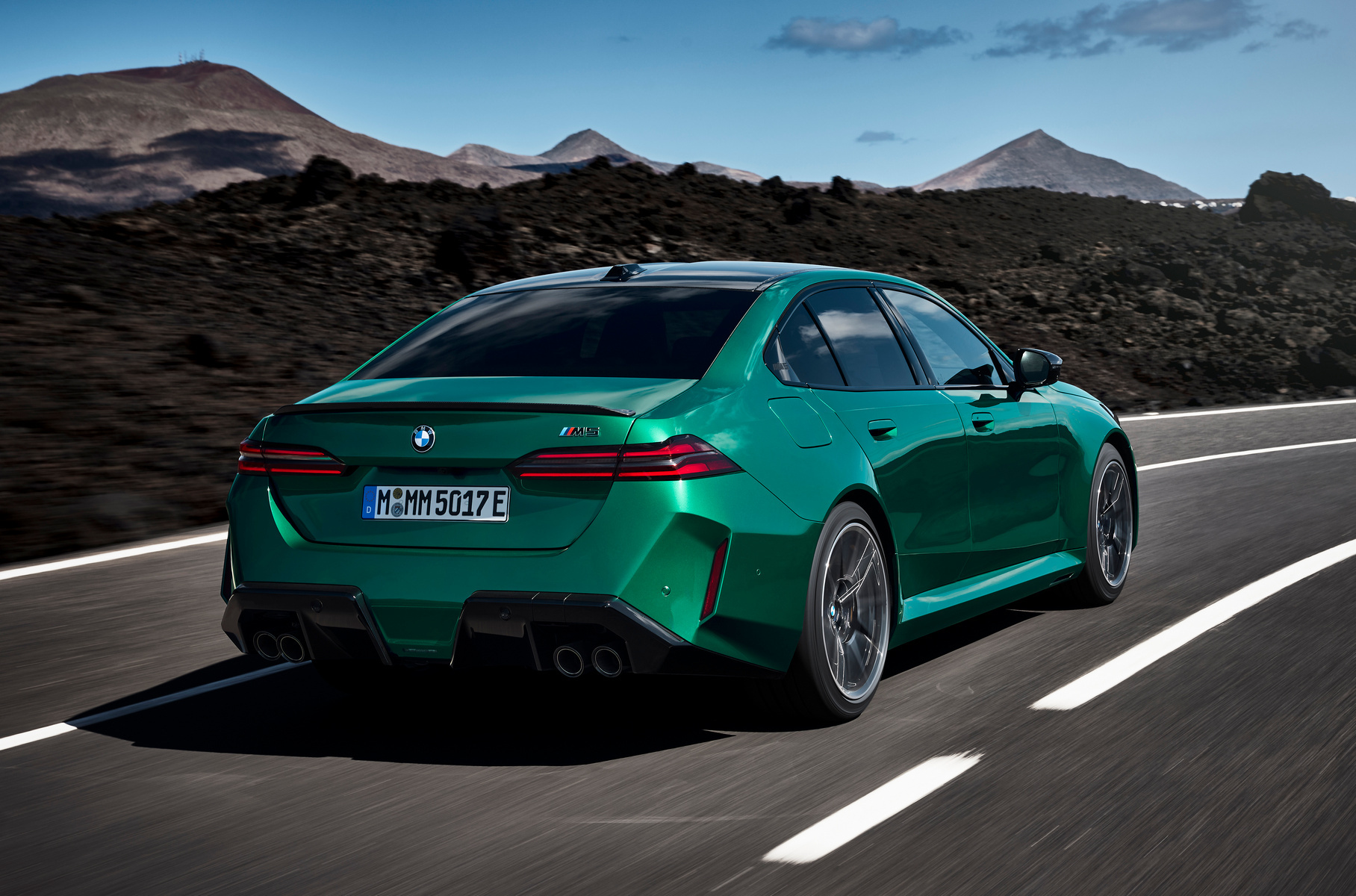 BMW’s main super sedan is now literally huge: 5096 mm long, 1970 mm wide and 1510 mm high (this is the only parameter that has decreased). And its rear wheels are an inch larger than the front ones: 21 versus 20. This solution is used quite rarely in the industry. Of the examples, the only one that immediately comes to mind is the Mercedes-AMG GT
BMW’s main super sedan is now literally huge: 5096 mm long, 1970 mm wide and 1510 mm high (this is the only parameter that has decreased). And its rear wheels are an inch larger than the front ones: 21 versus 20. This solution is used quite rarely in the industry. Of the examples, the only one that immediately comes to mind is the Mercedes-AMG GT
BMW Group
The body of the BMW M5 has acquired an aggressive tail: there are developed air intakes in the front bumper and an imitation diffuser in the rear, extended fenders and massive sills, a small blade spoiler on the trunk lid. Due to this, the M5 has grown slightly in size compared to the regular “five”, which itself has grown with the change of generations: length – 5096 millimeters (+36 mm), width – 1970 millimeters (+70 mm). But the height decreased by 5 millimeters (to 1510 mm).
The premiere of the BMW M5 in the G90 body will take place in July at the Goodwood Festival of Speed in England. Serial production will begin at the Dingolfing plant around the same time, with sales scheduled to begin in November. Prices in Germany start from 144 thousand euros, almost 20% more expensive than the previous model. The BMW M5 Touring station wagon should also appear later. /m
Victories for Bavaria: landmark BMW models
